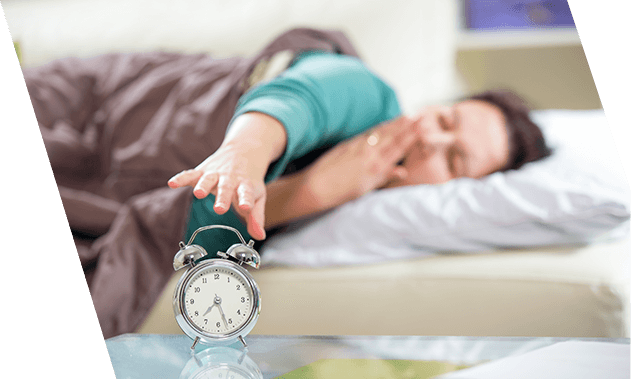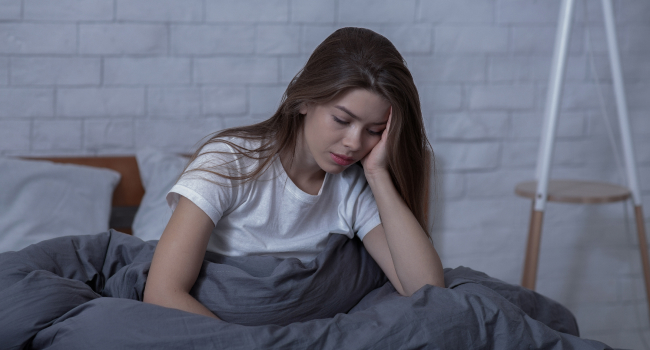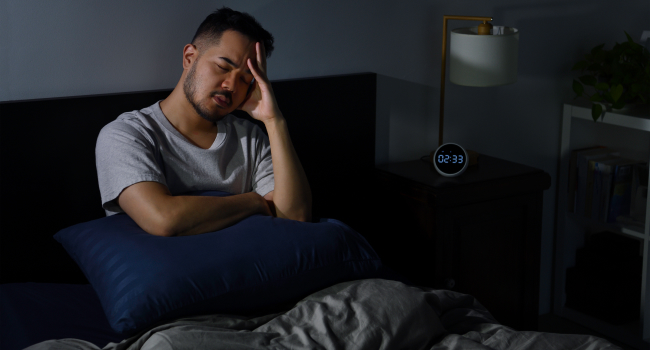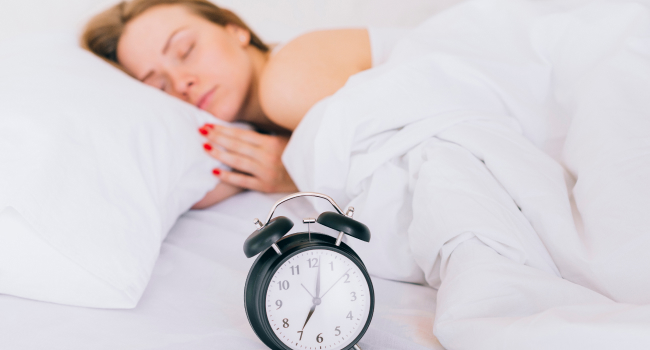Sleep is an essential daily routine for a person’s overall health. According to the Sleep Foundation, adults require approximately
A healthy sleep pattern gives a person the optimum mental and physical ability to perform daily tasks. Consequently, any sleep problem like insomnia or sleep inertia may impair normal well-being and require medical attention.
While insomnia makes a person sleepless, which leads to daytime sleepiness and other effects, sleep inertia affects people differently. Read on to know the details.
Get personalized support and manage sleep problems with the help of a healthcare expert.
What is Sleep Inertia
Sleep inertia means waking up disoriented and with groggy feelings. The condition is also known as brain fog and sleep drunkenness. Sleep inertia usually lasts between
Sleep inertia decreases cognitive alertness, slows reaction times, and hampers the performance of people that work in shifts. People that experience serious morning sleep inertia may have a higher risk of parasomnia, such as night terrors. Though sleep inertia is not a sleep disorder, it may require the help of a sleep specialist if severe.
Sleep Inertia Symptoms
The characteristics of sleep inertia after a nap or a night’s sleep are the same and include the following:
- Desire to fall asleep again
- Feelings of disorientation or confusion
- Brain fog or grogginess
- Fatigue
- Decreased cognitive ability
- Inability to concentrate
- Poor memory
- Impaired visual ability or attention
- Slow reaction time
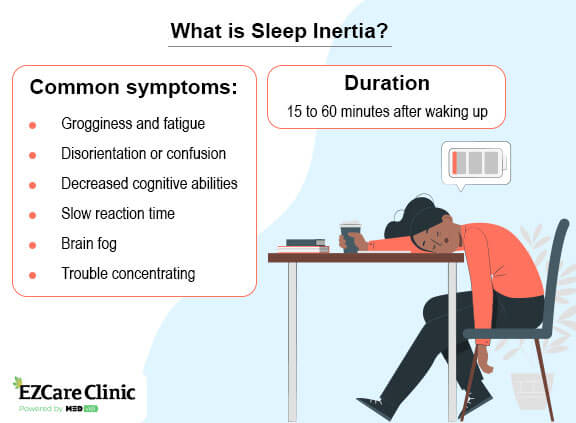
What Causes Sleep Inertia?
Researchers have not yet identified the specific cause of sleep inertia. Regardless, circumstances such as a delayed sleep phase, mental health disorders, sleep deprivation, and disruptors could trigger and aggravate the problem. The following reasons may be the genesis of sleep inertia:
- Changes in blood flow in the brain. The stage of a sleep cycle can increase or decrease the speed of the blood flow into the brain. When a person is asleep, the blood flow is usually slow, and it increases after a person wakes up. A widened interval between waking up and reaching the needed flow speed may cause sleep inertia and makes a person feel groggy.
- A high level of delta waves.
Delta waves [4*] , a kind of electrical waves produced by the brain, are related to relaxation and deep sleep. Although increased delta waves are associated with better quality of sleep, they can also cause sleep inertia. It happens if a person wakes up before the brain gets the chance to reduce the number of delta waves. - Slow brain reactivity. Sleep inertia may arise if some parts of the brain have a slow reactivation after waking up. For instance,
research [5*] showed that in sleep-deprived individuals, the prefrontal cortex took longer than other parts of the brain to receive a normal blood supply after waking. This brain region is responsible for decision-making, self-control, and execution, thereby its decreased activity boosts the risk of sleep inertia. - High levels of adenosine. Sleep inertia may occur due to the presence of adenosine, a sleep-inducing substance that accumulates in the brain during wakefulness and gets cleared during sleep. Abrupt waking up can cause the brain to remain in a state of sleepiness because adenosine is still present.
Consult a doctor to know how to manage your sleep issues.
How is Sleep Inertia Diagnosed
Severe sleep inertia can hamper a person’s ability to perform daily activities. It is essential to consult a clinician in case of serious symptoms for a proper diagnosis. Some of the causative factors a sleep expert may consider during diagnosis include:
- Mental disorders such as depression
- Other sleeping conditions, such as sleep apnea
- Side effects from medication
- A rotating and sleep-disruptive work schedule
- Stress
To diagnose any potential sleep disorders, your healthcare provider may perform a comprehensive sleep evaluation that includes some of these elements:
- Gathering information about your sleep patterns and sleep quality.
- Request you maintain a sleep journal to recognize any factors that could be affecting your sleep.
- Conducting a non-invasive sleep study called a polysomnogram.
Treatment and Management of Sleep Inertia
Sleep expert may recommend treatment if a person is diagnosed with severe sleep inertia and there is no other parasomnia, such as temporary sleep drunkenness.
Any activity that improves sleep quality and normalizes brain activities reduces sleep inertia. Sleep inertia gradually fades away if a person gets healthy and adequate sleep. Some tips on how to get rid of sleep inertia are discussed below.
- Wake up gradually. Waking up gradually will counteract the negative impacts of sleep inertia. The intentional delay before engaging in active life gives the brain time to replenish the blood flow and adjust.
- Keep a regular sleep schedule. According to
studies [6*] , the body’s circadian rhythms do affect sleep inertia. The body is able to adjust and develop its natural sleep-wake pattern known as an internal clock from a regular sleep pattern. So, a sleep schedule will align the brain with the internal clock to reduce sleep inertia. - Adopt a healthy bedtime routine. Avoid heavy meals and caffeinated and alcoholic drinks before bedtime, log off from electrical gadgets, have comfortable bedding, and keep the bedroom cool and dark.
- Practice countermeasures to overcome sleep inertia after waking up. Engage in physical or mental exertion activities, splash the face with cold water, switch on a bright light, or play an intense and moderate continuous noise.
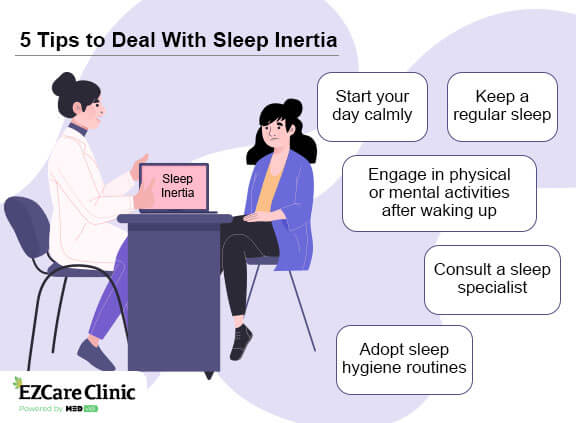
Conclusion
Any sleep pattern disruption, such as sleep inertia, may interfere with a person’s everyday life. Though the exact cause of sleep inertia is unknown, there are a few possible reasons, and a medical expert can help you identify it.
Fortunately, the condition is usually short-lived and possible to manage. Implement the above-mentioned self-help techniques, and if they do not seem helpful, turn to a healthcare professional and get the personalized help you need.
